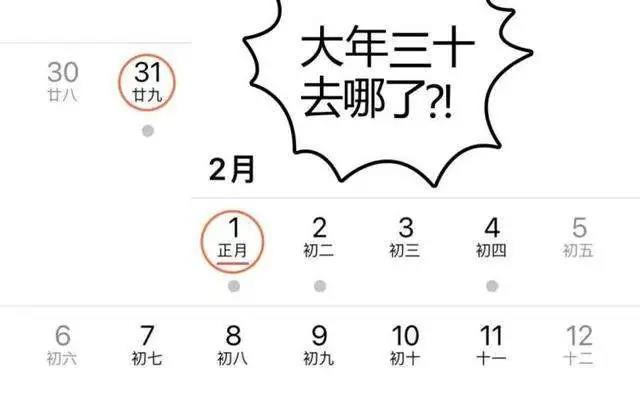Today’s New Year’s Eve, why not "30"? It changed to "29 years old" after a difference of one or two seconds, and it came back three years later.

The Spring Festival is approaching Shencheng with a strong flavor.
Today’s New Year’s Eve, I believe everyone is looking forward to a big dinner tonight. We have habitually called New Year’s Eve "New Year’s Eve". However, have you noticed that there is no "New Year’s Eve" this year, only "Year 29"?
In fact, this is all because our lunar calendar is "too reasonable".
Where is the New Year’s Eve?
Shi Kun, director of the Network Science Department of the Exhibition and Education Center of the Shanghai Planetarium, said that the solar calendar is the most commonly used in our life. In fact, it is more precisely the Gregorian calendar, or Gregory calendar. For example, January 1st of New Year’s Day, May 1st of Labor Day, October 1st of National Day, etc., all these festivals use the Gregorian calendar. The Gregorian calendar refers to the period of revolution-Tropic Year of the Earth, with an average of 365.2422 days a year.

The lunar calendar, on the other hand, is a combined calendar of yin and yang, and its month length is determined with reference to the apparent movement of the moon-the cycle of phase change. The moon’s cycle of "rain or shine" is called the new moon, the new moon is the new moon and the full moon is the hope, hence the name. The average length of a first lunar month is 29.5306 days (29 days, 12 hours and 44 minutes). Therefore, the number of days in the lunar month is either 30 days or 29 days, so there is a folk saying that "the big month is 30 days and the small month is 29 days". However, the arrangement of the big moon and the small moon is not arranged at regular intervals, but is completely decided by the moon phase.
We often say that "the lunar calendar is a traditional calendar in China with a history of thousands of years", but this statement is not accurate. Chinese culture has a long history, and there have been more than 100 calendars in thousands of years. The lunar calendar is only the calendar currently used, but it inherits the ancient calendars such as the summer calendar in terms of big principles and algorithms. The compilation of the lunar calendar stipulates that the first day of each month, that is, the "first day", is determined by the time when the "new moon" appears. This principle is called "the method of determining the new moon".
Accord to that compilation and promulgation of the lunar calendar drafted by Purple Mountain observatory of Chinese academy of science, "Shuori is the first lunar day of the lunar month", that is to say, the first day of each lunar month is Shuori. From "New Moon" to "Hope" and then to the next "New Moon", the period is about 29.53 days, so the calculated number of lunar months is either 29 days for a small moon or 30 days for a big moon.
Round counting, the lunar month is divided into 30 days and 29 days according to the size. If the twelfth lunar month happens to meet the lunar abortion, there will be no "New Year’s Eve".
Specifically, because it coincides with the 29-day abortion, the "New Year’s Eve" on the day before the Spring Festival of the Year of the Tiger in the upcoming lunar calendar has been "omitted".
There will be no "New Year’s Eve" in the next five years.
In fact, there are many times when the twelfth lunar month meets the abortion, and it is not uncommon for the twelfth lunar month to meet the abortion. There is no "New Year’s Eve" in the past 2013, 2016, and the next five years from 2025 to 2029.

Are there any rules?
"It is generally regular, but it seems that the regularity is not very strong locally." Shi Kun explained that it was because the moon, a satellite, was not small compared with the earth around which it revolved, so the orbit of the moon was not simple. It kept swinging, as if it were dancing a very complicated "waltz" between the earth and the moon. A lunar cycle averages 29.5306 days, but it is only average, which does not mean that every month is 29.5306 days. Similarly, the length of a lunar year may be 354 days or 355 days, which is not fixed (the probability of 354 days is higher).
If you don’t understand, imagine the extreme situation: if the new moon occurs at 23: 59, the number of days in the lunar month will be one day less; If the new moon happens at 0: 01, there will be an extra day. It is no exaggeration to say that a difference of one or two minutes can determine whether New Year’s Eve is "30" or "29".
The lunar calendar is so "reasonable", let nature decide everything!
Author: Shen Qiusha
Editor in charge: Ren Quan
* The exclusive manuscript of Wenhui, please indicate the source.
Reporting/feedback